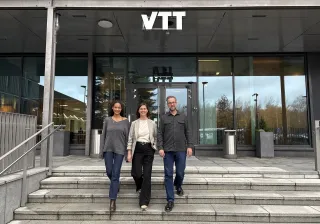The possibilities provided by the broad application field of dual-use technologies is considered as an important factor in the long-term technological, economic and defence development of Europe and the Strategic Autonomy of the European Union. Thus, the European Commission (EC) has encouraged research on dual-use potential technologies while focusing on economic growth and competitiveness of Europe’s defence industry. During the last three years, the European Union has invested significantly on defence related projects. The projects have joined military and civil partners in delivering impacts.
The EC, in cooperation with the European Defence Agency, has brought forward the possibility to explore dual-use synergies between civil and defence research. The cooperation to facilitate research in defence can be seen in initiatives such as the PADR, but also through the usage of other research funds as the European Structural and Investment Funds (ESIF). The EC efforts to boost dual-use research highlights a broader trend in R&D, in which the lines between military and civilian technologies are increasingly blurred.
Dual-use policies tackling the military and civilian synergies are a response to the continuous decline in defence expenditures since the end of the Cold War. Such policies took into consideration the increased complexity and costs of military technology, the fast-paced technological innovation in the civil industry and the changing dynamic between civil and military technology development.
With the advance of the so-called Forth Industrial Revolution, it becomes evident that technologies such as those in the realm of ICT, KETs, big data, synthetic biology, 3D printing and artificial intelligence are and will become an important source of innovation for both defence and civil industries.
Identifying challenges and easing the pathway
Despite the dual-use R&D potential to accelerate innovation and the efforts of the EC to boost it, by seen it as an enabler of economic growth and competiveness in the defence market, the actual dissemination of dual-use related activities across Europe has been challenging.
In recent reports published by the Stockholm International Peace Research Institute (SIPRI) in 2017 and the “Best practice for identifying and assessing the dual-use issues in enabling technologies research, JANUS” in 2018, it was presented a comprehensive overview of the most common challenges faced by different sectors and actors dealing with dual-use technology and goods.
After consulting representatives of different sectors, including researchers and export control experts across Member-States, some the common sectorial challenges identified were: difficulty to find specific guidance for conducting dual-use research, to classify a new technology and determine if it is subjected to dual-use or arms exports control.
Moreover, it was highlighted the urgent need for enhanced transparency and the simplification of guidelines and regulations on DU research, in addition to facilitating their access for DU research actors. With these identified challenges in mind, we aimed to understand what is the support base researchers and companies need for starting to work on research and innovation in the DU area.
A database and FAQ available
As part of the European Commission funded project “Dual Use Materials – Addressing dual-use issues in enabling technologies research”, we then created a centralized database of dual-use research guidelines publically available at dualusematerials.eu. Additionally, to further support researchers and industry partners in EU Member-States, we developed a dual-use FAQs openly available at the same webpage.







